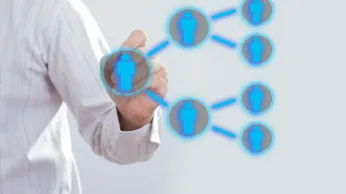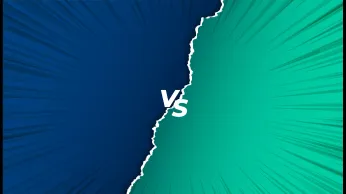¿Cómo pueden los profesionales del marketing aprovechar la primacía y el efecto de recurrencia?
Descubra cómo aprovechar los efectos de primacía y recencia en cada etapa del embudo AIDA. Aprenda técnicas para captar la atención, crear interés, despertar el deseo e impulsar la acción con estrategias de marketing más inteligentes y basadas en la psicología.
En esta página
- ¿Qué es el efecto de primacía-recencia?
- Cómo funciona el efecto de primacía-recencia (la psicología que lo sustenta)
- Algunos ejemplos del efecto primacía-recencia en marketing
- Cómo utilizar el efecto de primacía-recencia en el embudo de marketing AIDA
- Por qué los profesionales del marketing deben prestar atención al efecto primacía-recencia
- Activar el efecto de posición serial - Efecto de primacía y recencia
Cada día, los profesionales del marketing dedican tiempo y creatividad a elaborar el mensaje perfecto. Pero en un mundo ruidoso y distraído, no siempre gana la voz más alta, sino la que se recuerda.
En lugar de intentar eclipsar a la competencia, ¿qué pasaría si simplemente diseñara su comunicación para que cale mejor en la mente de su público?
Ahí es donde los efectos de primacía y recencia cambian silenciosamente el juego. Estos poderosos principios cognitivos demuestran que las personas están predispuestas a recordar lo primero y lo último que encuentran, mientras que lo de en medio suele pasar a un segundo plano.
No se trata sólo de lo que se dice, sino de cuándo y cómo se dice.
Ahora, imagina alinear estos conocimientos con el clásico marco de marketing marco de marketing AIDA - guiar la atención, el interés, el deseo y la acción con una estrategia que respete cómo funcionan realmente la memoria y la motivación.
Al integrar el pensamiento de primacía y recencia en cada etapa del embudo AIDA, los profesionales del marketing pueden crear recorridos que no sólo sean persuasivos, sino también profundamente memorables, influyendo en las decisiones exactamente en los momentos adecuados.
En este blog, exploraremos cómo aplicar el efecto de primacía-recencia en todo el embudo AIDA, ayudándole a crear experiencias de marketing que dejen un impacto más fuerte, más inteligente y más duradero.
¿Qué es el efecto de primacía-recencia?
Efectos de primacía y recencia o efecto de posición serial son principios cognitivos que afectan al modo en que las personas absorben y recuerdan la información.
El efecto de primacía se refiere a nuestra tendencia a recordar más fácilmente los elementos presentados al principio de una secuencia que los situados en el medio. Se refiere a nuestra tendencia a recordar mejor los primeros elementos que encontramos, ya que reciben más atención mental, se ensayan con frecuencia y es más probable que pasen a la memoria a largo plazo. A medida que se introduce más información, la capacidad del cerebro para procesar cada nuevo elemento disminuye, lo que hace que los primeros destaquen más.
El efecto de recencia se refiere a nuestra tendencia a recordar mejor los elementos que aparecen al final de una secuencia. Por ejemplo, si te dan una lista de palabras, es más probable que recuerdes la primera y la última que las que aparecen en medio.
Describe nuestra tendencia a recordar más fácilmente los últimos elementos que encontramos, ya que permanecen frescos en la memoria a corto plazo o de trabajo. Es más probable que los clientes recuerden una llamada a la acción colocada al final de un mensaje de ventas o un patrocinador de podcast mencionado cerca de la conclusión del contenido.
Cómo funciona el efecto de primacía-recencia (la psicología que lo sustenta)
El efecto de primacía-recencia no es sólo un mito del marketing: es un concepto bien establecido en psicología cognitiva, respaldado por décadas de investigación científica.
El efecto primacía: Por qué perduran las primeras impresiones
- Procesamiento cognitivo profundo: La información que se introduce pronto recibe más atención mental y se ensaya más, por lo que es más probable que se almacene en la memoria a largo plazo. En esencia, el cerebro prioriza lo que encuentra primero.
- Anclaje y establecimiento del contexto: El mensaje inicial establece el tono y actúa como punto de referencia mental. Una buena apertura determina la interpretación de la información siguiente.
Por eso, un titular impactante o el primer beneficio enumerado en un anuncio o página de destino pueden tener una gran influencia en el compromiso del usuario.
El efecto retrospectivo: Por qué importan las impresiones finales
- Accesibilidad de la memoria a corto plazo: La información mostrada en último lugar sigue activa en la memoria de trabajo, lo que facilita su recuerdo poco después de ser vista.
- Cierre psicológico: El cerebro busca de forma natural una sensación de conclusión, lo que hace que los mensajes de cierre sean más memorables y persuasivos.
Por eso es tan eficaz colocar una llamada a la acción al final de un mensaje de marketing: aprovecha los momentos finales, cuando la atención está en su punto álgido.
El reto del "hijo mediano
Los contenidos situados en el centro suelen pasarse por alto debido a varios factores cognitivos:
- Interferencias: La información presentada al principio y al final puede perturbar la codificación y el recuerdo de los contenidos intermedios.
- Fatiga mental: Después de interactuar con el contenido inicial, la energía cognitiva de la audiencia empieza a decaer, lo que reduce la atención para lo que sigue.
- Falta de posicionamiento destacado: El contenido intermedio no se beneficia de la prominencia de ser el primero o el último, lo que lo hace menos memorable.
Los estudios de marketing confirman una y otra vez que los contenidos situados en una posición intermedia tienden a llamar menos la atención y a ser menos recordados, lo que en círculos de marketing se conoce como el "valle de la muerte de los contenidos".
Algunos ejemplos del efecto primacía-recencia en marketing
Los profesionales del marketing inteligentes aplican el efecto de primacía-recencia en varios canales de comunicación:
- Presentaciones: Los oradores experimentados suelen seguir la estructura "Previsualizar el mensaje, transmitir el mensaje, recapitular el mensaje" para reforzar la retención.
- Correos electrónicos: Los puntos clave se sitúan en el asunto y en el párrafo final, con llamadas a la acción convincentes al final.
- Anuncios de televisión: Las marcas se presentan al principio del anuncio y dejan una impresión duradera con un eslogan o eslogan final contundente.
- Envasado de productos: Los detalles importantes suelen colocarse en la parte superior e inferior de las etiquetas para que se recuerden.
Cómo utilizar el efecto de primacía-recencia en el embudo de marketing AIDA
Lalente de la motivación- y los incentivos que le dan forma- nos ofrece una palanca refrescantemente innovadora para considerar al menos un retoque, si no una revisión, del legado de AIDA.
¿Cómo podemos detener laatención en un mar de distracciones durante un segundo más? ¿Es posibleinteresar a clientes potenciales con algo que resuene con ellos a un nivel más profundo? ¿Qué hace falta para evocardeseo irresistible?
Por último, ¿hay alguna forma más inteligente de incitar a laacción en esos momentos finales en los que "podría pasar cualquier cosa" que quitan el sueño a la mayoría de los vendedores? Averigüémoslo con un reinicio basado en la motivación.
Atraer la atención
En la parte superior del embudo de marketing AIDA (TOFU), el reto está claro: su mercado -los clientes potenciales- a menudo aún no le conoce. Y menos aún en el contexto del producto o servicio concreto que ofreces.
En esta fase, el público suele lanzar una amplia red, explorando temas amplios con curiosidad más que buscando soluciones profundas. Sus desencadenantes pueden ir desde la navegación casual ("¿Qué hay de nuevo?") hasta la preparación de un discurso de apertura o incluso el inicio de la investigación de un problema que aún no han articulado del todo. A veces, ni siquiera son conscientes de que tienen una necesidad.
Para las marcas, es el momento de lanzar su propia red mediante una combinación de estrategias outbound (medios de comunicación de masas) e inbound (contenidos específicos).
Dado que las primeras impresiones tienden a perdurar -fenómeno conocido como efecto primacía-, es crucial que el primer encuentro de un cliente con su marca sea impactante, memorable y positivo.
Hoy, aunque el escenario se ha desplazado a Internet, el principio sigue siendo el mismo.
Los vídeos, los blogs, las redes sociales, los podcasts y el marketing basado en la experiencia son ahora los nuevos terrenos de juego para captar la atención y despertar la curiosidad, ya se trate de marcas de la nueva era o de iconos centenarios.
Esta etapa de atención es también una oportunidad crítica para establecer autoridad, empatía y confianza mostrándose donde están sus clientes, no con una venta dura, sino con contenido útil y relevante. Piense en blogs de empresa, tiendas de experiencias, ferias, mercados de fin de semana o comunidades virtuales.
Sin embargo, no está solo. Su competencia también está intentando ganarse ese preciado primer recuerdo. Así que, ¿cómo puede ganar ventaja y asegurarse de que su marca no solo se perciba, sino que se recuerde?
Aquí tienes cinco maneras:
1. Realice encuestas para conocer a su público
Utilice encuestas y sondeos -tanto internamente como en plataformas sociales- para captar los sentimientos de los clientes, los retos actuales y las listas de deseos.
Bono: La información recabada en una fase temprana puede ayudarle a definir mejor sus mensajes de marketing, lo que reforzará el poder de sus esfuerzos por conseguir el efecto primacía.
2. Capacitar a los expertos en la materia (PYME)
Colabore con expertos internos y externos para crear contenidos de alto valor, desde blogs y libros blancos hasta seminarios web y publicaciones en redes sociales. Incentivar a las pymes garantiza que la calidad y la pasión que hay detrás del trabajo brillen con luz propia, posicionando su marca como un centro de conocimiento de confianza en una fase temprana del viaje del cliente.
3. Aportar valor inmediato e invitar a la acción
Cuando sorprendes a tus clientes potenciales con contenido valioso por adelantado, creas admiración y afinidad. Aprovecha este momento para invitarles a realizar una pequeña acción: suscribirse a tu boletín, canal de YouTube o podcast.
Así se aprovecha el efecto memoria: la última interacción que han tenido (registrarse o suscribirse) deja un recuerdo más fuerte y refuerza el compromiso.
4. Organizar seminarios web y asistir a actos
Los seminarios web con expertos en la materia y las participaciones en ferias comerciales no solo generan credibilidad, sino que también sitúan a su marca en el territorio del "primer recuerdo".
Consejo profesional: Incentive adecuadamente a los ponentes y participantes invitados para aumentar la asistencia y profundizar en las impresiones de marca.
5. Establezca objetivos SMART para sus equipos de divulgación
Anime a sus equipos de ventas, marketing y SEO a establecer objetivos SMART (específicos, medibles, alcanzables, relevantes y sujetos a plazos).
Enlace incentivos para mantener el impulso. Gamificación refuerza el recuerdo de la marca, aprovechando de nuevo tanto el efecto de primacía (exposición inicial) como el de recuerdo (acciones recientes).
Al orquestar cuidadosamente tanto el primer impacto como la última pregunta, puedes aumentar significativamente tus posibilidades de hacer que los clientes potenciales se adentren más en el embudo AIDA y, finalmente, convertirlos en clientes fieles.
Crear interés
Esta es la parte más complicada del embudo AIDA, donde comienza el verdadero reto.
Aquí es donde hay que lograr un cambio de mentalidad y despertar una curiosidad duradera por el producto o la marca. En resumen, hay que llevar al público de cero a uno, sin que muestre signos de impaciencia o desesperación.
¿La clave del éxito?
Empieza por demostrar que conoces a fondo el mundo de tu público: sus necesidades, frustraciones y aspiraciones. Deje claro que está preparado y equipado para mejorar sus vidas.
Estrategias para crear y mantener el interés
En esta fase de la mitad del embudo (MOFU, por sus siglas en inglés) es donde los mensajes estratégicos son fundamentales. Dado que el público ya le tiene a usted y a sus competidores en el punto de mira, debe destacar su singularidad:
- Profundice en las características y ventajas distintivas (muestre en qué se diferencia).
- Claridad mediante demostraciones y recorridos (tanto presenciales como digitales).
- Desencadenantes del síndrome FOMO (ofertas por tiempo limitado, ventajas por reserva anticipada).
- Validación mediante testimonios e historias de usuarios.
- Aumentar la confianza a través de las opiniones de los clientes.
- Fomento de la confianza mediante el apoyo de personas influyentes.
Aprovechar el efecto de primacía asegurándose de que el primer mensaje clave que encuentren -ya sea una demostración, una reseña o la USP de un producto- sea potente, claro y memorable.
Solo tienes una oportunidad de ser la primera marca con la que se sientan identificados.
Crear demanda donde no la hay
En esta fase, puede incluso crear necesidades de las que los clientes no eran conscientes.
Por ejemplo:
- Un aficionado ocasional a los gadgets puede darse cuenta durante una demostración en una feria de que un televisor con "protección visual" es perfecto para la salud de su hijo.
- Un influencer de YouTube podría despertar sutilmente el deseo latente de una caja de suscripción de bienestar durante un vídeo de unboxing.
Ya sea fuera de línea en un quiosco de una feria o en línea a través de una campaña inteligente con influenciadores, es aquí donde despertar una nueva necesidad emocional o práctica puede acercar a los clientes a la intención.
Maximizar el impacto con motivación
Ahora que ha captado su atención, ¿cómo puede mantener el impulso?
Aquí es donde una capa inteligente de motivación -y el aprovechamiento del efecto retrospectivo- pueden hacer maravillas.
Coloque incentivos pequeños pero significativos en los puntos de contacto críticos:
- Recompense a los visitantes que se registren en una demostración en directo.
- Ofrezca ventajas por rellenar formularios o encuestas.
- Atraiga a los usuarios con concursos gamificados en torno a las características del producto.
- Anime a los equipos de los centros de contacto a impulsar el seguimiento con incentivos.
- Motivar a las personas influyentes para que creen contenidos auténticos y atractivos.
- Anime a los equipos de marketing digital a crear activadores de remarketing inteligentes.
El efecto de recuerdo sugiere que la última interacción deja un recuerdo duradero, así que diseñe sus interacciones para que terminen con señales fuertes y positivas (como un descuento sorpresa o una invitación exclusiva) para profundizar en el compromiso y acercarles a las fases de Deseo y Acción.
Despertar el deseo
En esta fase del embudo AIDA, los clientes potenciales ya saben lo que usted ofrece y entienden por qué puede ser una opción mejor que otras.
Sin embargo, aún falta la última ignición emocional, el momento "¡OMG, necesito esto!
Esta oleada emocional es lo que convierte el interés en deseo real, y a menudo surge de desencadenantes como:
- Aspiración
- Deseo
- Pasión
- Celos
- Alegría
- Altruismo
- Incluso una pizca de sana codicia
Cómo acariciar el deseo con eficacia
En la fase del deseo, ya no se trata sólo de argumentos racionales: se trata de vender el chisporroteo, no el filete.
He aquí cómo puedes hacerlo:
- Empiece con fuerza: Abra su mensaje con una ventaja que parezca un gran avance -
(por ejemplo, "Por fin, una forma más rápida e inteligente de...")
Esto aprovecha el efecto de primacía, por el que es más probable que los clientes recuerden la primera sacudida emocional que experimentan. - Comparta historias vívidas: Presente estudios de casos, testimonios e historias del mundo real que permitan a los compradores potenciales ver la transformación que otros han logrado gracias a su producto.
La narración de historias es crucial en este caso porque los relatos emocionales permanecen más tiempo en la memoria, otro refuerzo del efecto de primacía. - Introduzca elementos de aspiración:
Introduzca avales, alineaciones de famosos o validaciones de personas influyentes que aprovechen los objetivos de estatus, admiración o estilo de vida. - Diseñe bien el final:
Termine su compromiso -ya sea una reunión de ventas, un seminario web o un anuncio- con un gancho final convincente (una oferta con límite de tiempo, un pase exclusivo de acceso anticipado o una actualización sorpresa).
Crear deseo es crear primeras impresiones que lleguen al corazón (Primacía) y cerrar con pistas que provoquen una acción inmediata (Recencia).
Al alinear los desencadenantes emocionales con los mensajes estratégicos, acercará a sus clientes potenciales a la fase de acción.
Acción desencadenante
La fase final del embudo AIDA -la acción- es el punto culminante de todos los esfuerzos anteriores. A estas alturas, ya has creado conciencia, alimentado el interés y avivado el deseo.
Pero recuerda que, incluso cuando un cliente potencial está a centímetros de decir "sí", pequeñas barreras o distracciones pueden descarrilar la conversión.
En la parte inferior del embudo (BOFU), su atención debe centrarse en hacer que la acción sea fluida, urgente y gratificante.
Estrategias para maximizar la acción
- Utilice recordatorios inteligentes
Los avisos oportunos a través de SMS, WhatsApp y correo electrónico pueden reactivar la intención. Los recordatorios amistosos garantizan que su marca siga siendo lo último en lo que piensan cuando llega el momento de tomar una decisión. - Implemente el retargeting de forma inteligente
Las campañas de retargeting de anuncios -en particular para carritos abandonados, cajas perdidas o formularios abandonados- ayudan a recuperar clientes potenciales mientras su interés aún está vivo. - Optimice las páginas de pago y de destino
Asegúrese de que sus sitios web y páginas de destino están optimizados para la conversión: - CTA claros.
- Tiempos de carga rápidos.
- Inscripciones de prueba o solicitudes de demostración sin esfuerzo.
- Asistencia intuitiva de chatbot en caso necesario.
La primera experiencia al llegar a una página de aterrizaje debe reafirmar inmediatamente el valor y reducir la fricción para fijar la confianza.
- Cree urgencia y escasez
Las activaciones de ventas especiales, las ofertas de última hora, los descuentos por reserva anticipada, las ventas flash y las ofertas de consultas o pruebas gratuitas añaden urgencia.
- Utilice los incentivos con prudencia
Los incentivos siguen siendo una herramienta poderosa en esta fase: - Recompense a los equipos de ventas de primera línea, los centros de llamadas y los socios de canal.
- Ofrezca a los clientes puntos de fidelidad, devoluciones en efectivo o bonificaciones por completar acciones rápidamente.
- Reconozca públicamente a los equipos internos para mantener alta la moral y la motivación.
- Perfeccione el proceso de ventas
Un proceso de ventas fluido, ágil y "engrasado" -con seguimientos rápidos, ofertas personalizadas y sin cuellos de botella- puede marcar la diferencia entre cerrar o perder un cliente.
Por qué los profesionales del marketing deben prestar atención al efecto primacía-recencia
He aquí por qué los profesionales del marketing deben prestar atención al efecto primacía-recencia:
Una ventaja estratégica
En un mundo en el que la atención del consumidor está cada vez más fragmentada, el efecto de primacía-recencia ofrece a los profesionales del marketing un enfoque respaldado por la investigación para estructurar los contenidos con el máximo impacto. Al comprender cómo recuerda la gente la información, los profesionales del marketing pueden obtener una clara ventaja en:
- Hacer que los mensajes de marca sean más memorables
- Diseñar recorridos del cliente que persuadan eficazmente
- Mejorar la retención de mensajes
- Aumentar las conversiones en los puntos de decisión clave
Uso responsable
A pesar de su poder, este principio psicológico debe aplicarse con integridad:
- Sea transparente: Utilícela para resaltar los mensajes realmente importantes, no para ocultar detalles críticos en zonas menos visibles.
- Manténgase fiel al valor: Asegúrese de que el primer y el último mensaje reflejen el valor real para el cliente, no afirmaciones exageradas.
- Comunicar con honestidad: centrarse en la claridad y la autenticidad en lugar de manipular los resultados mediante una estructura engañosa.
A largo plazo, el uso más eficaz de este principio consiste en capacitar a los clientes para que tomen decisiones informadas y seguras, no en empujarles a tomar decisiones impulsivas de las que podrían arrepentirse.
Activar el efecto de posición serial - Efecto de primacía y recencia
Según lapsicologíael cerebro registra de forma diferente las experiencias iniciales y las posteriores. Lo primero que percibimos (lo que vemos, oímos, saboreamos, etc.) tiende a alojarse en la memoria a largo plazo, mientras que lo que encontramos más tarde (es decir, lo más reciente) va a la memoria a corto plazo. Cuando la mente del consumidor se enfrenta a la comunicación del vendedor,la memoria a corto plazo suele ser la primera en activarse (efecto de recurrencia), estableciendo una conexión con el último mensaje o el anterior.
Sin embargo, a medida que el mensaje va calando,el largo plazo entra en acción (efecto de primacía), estableciendo el contexto y el escenario para el significado y el impacto globales. Como custodios del producto y líderes de la marca, nuestra tarea consiste en sincronizar ambos de forma óptima para sacar el máximo partido. Un lanzamiento fuerte, por ejemplo, puede establecer el contexto a largo plazo con el efecto de primacía, mientras que la comunicación continua puede seguir reviviéndolo y recordándolo con el efecto de recencia.
Reserve una demostraciónAhora










